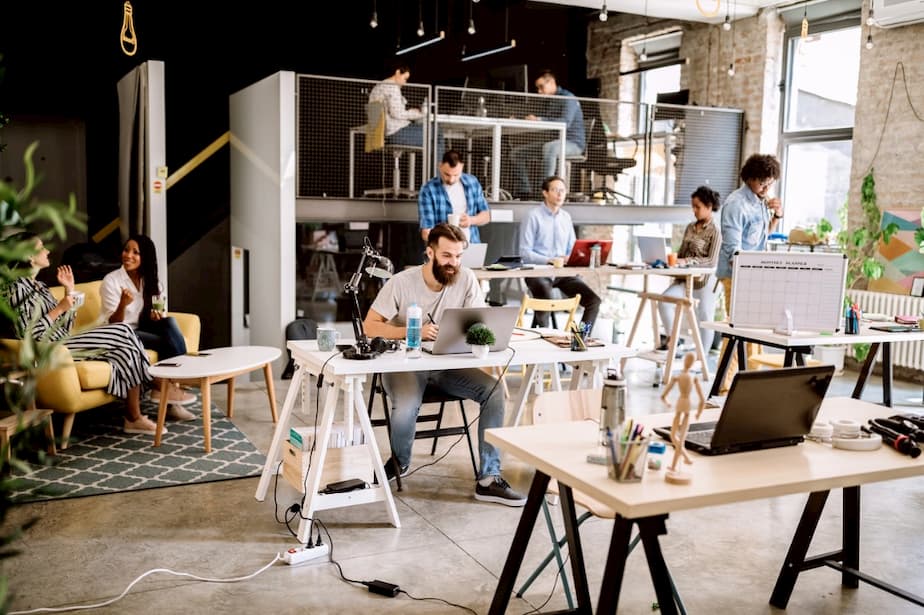The term coworking space derives from the new work form known as coworking, in which freelancers, creative people and/or start-ups come together to work in public spaces. The rented office spaces are thus referred to as coworking spaces. A coworking space offers its members a fully equipped workplace consisting of printer, scanner, Internet access, individual rooms and meeting rooms, plus flat rates for coffee and water in some cases. In addition, it also pursues a community idea. The aim is to promote continuous dialogue between the members who use a coworking space independently of each other. Coworking spaces evoke values such as community, openness, collaboration and sustainability. They are based on different booking models with weekly or monthly rates. In recent years, coworking spaces have experienced rapid growth.
Table of contents
Why are coworking spaces interesting for companies?
What advantages do coworking spaces offer to employees?
What criteria should you look for when choosing a suitable coworking space?
How can the coworking work model be established in a company?
Which coworking space models are currently in vogue?
Why are coworking spaces interesting for companies?
In addition to freelancers, start-ups and creative people, established companies too are increasingly using coworking spaces. There are many reasons for this.
Savings through a central location
Rental prices in big cities are becoming more and more expensive, which adds to the monthly financial outlay for companies. Coworking spaces have an advantage here: They are usually located in very good and central inner-city locations and enable their members to use the office space much more effectively. At the same time, the costs are often lower than usual rents, because companies pay for the premises only for the time they are actually used. In addition, this arrangement offers significantly greater flexibility to companies that want to establish themselves in a new location or start-ups that have just entered the market. Instead of high rents and long notice periods, they can test their market value by renting office space in coworking spaces – and can terminate at short notice if necessary.
Sound infrastructure
Included in the rental fees of a coworking space is the office infrastructure. With everything from furniture and office equipment such as printers, scanners, telephones and beamers to high-speed Internet, state-of-the-art meeting rooms and coffee lounges, coworking spaces offer ideal conditions for working on joint projects or business ideas.
Concentration on the essentials
Modern technology, professional room planning and an open and collaborative atmosphere contribute to productivity and creativity. On the other hand, many distractions await at home or even in a regular office setting. Unfinished household chores or repairs in the home can distract people from the work they should be doing, as can technical problems in the company's office.
What advantages do coworking spaces offer to employees?
For employees, the open and collegial working atmosphere is particularly advantageous. Unlike in a home office, participants in coworking spaces always meet other coworkers. This can be inspiring and motivating at the same time. In open lounges, members can get to know each other and share ideas on various business topics. This often leads to new solutions and ideas for current projects or even business partnerships. Some coworking spaces employ community managers who promote collaboration and support members in networking. For employees who want an undisturbed working environment, individual rooms are provided.
